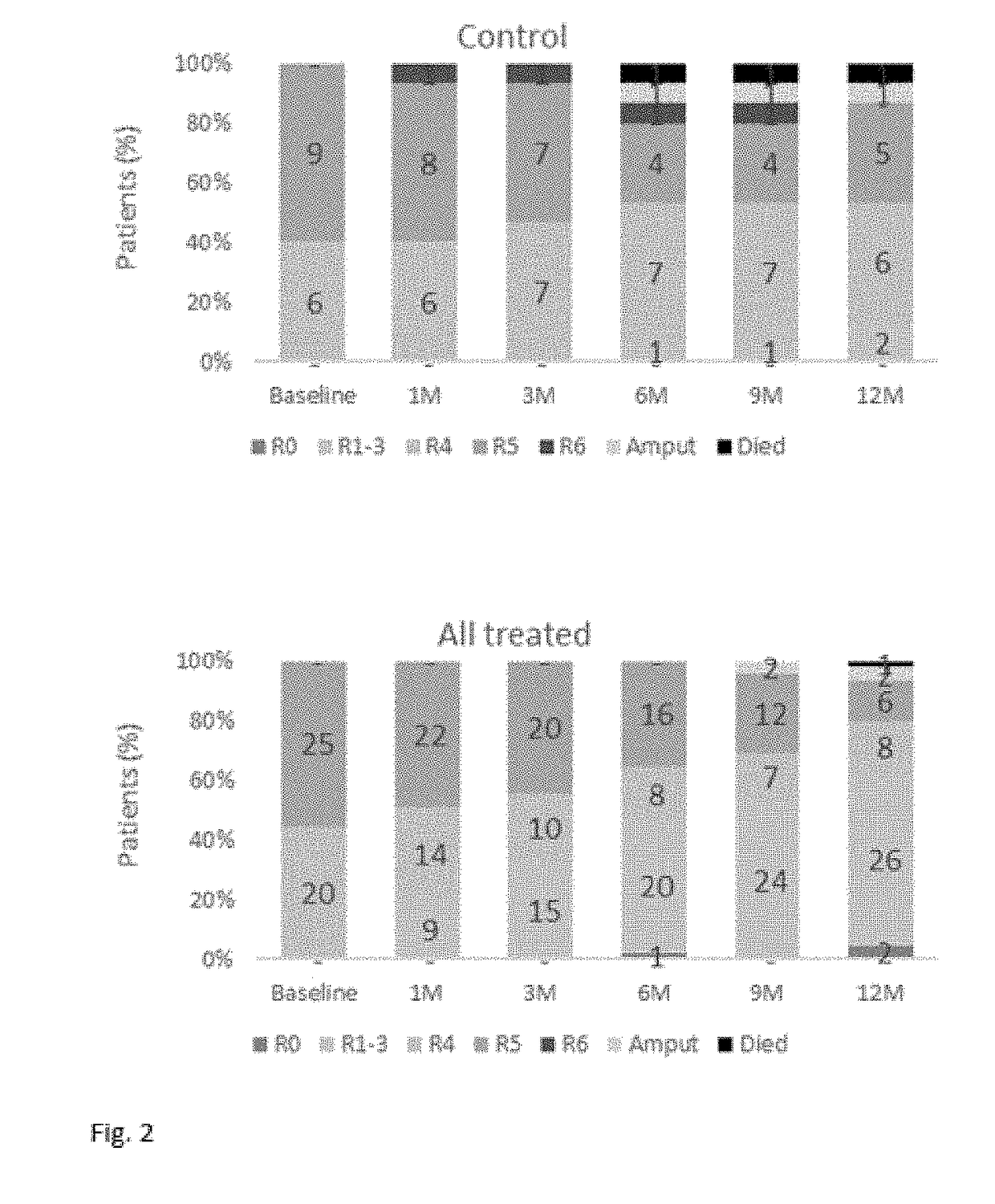Cell suspension for use in the treatment of lower extremity peripheral artery disease
a technology for peripheral artery disease and cell suspension, which is applied in the field of cell suspension of adult bone marrow derived cells, can solve the problems of insufficient oxygen supply, non-healing ulcers, and insufficient correlation with clinical severity of diseas
- Summary
- Abstract
- Description
- Claims
- Application Information
AI Technical Summary
Benefits of technology
Problems solved by technology
Method used
Image
Examples
example 1
and Methods
[0169]1. Cell Suspension and Method of Production Thereof.
[0170]To illustrate the present invention, a cell suspension according to the present invention has been used in the following examples made of an autologous cell suspension of BM-MNCs composed of several mature cell types as well as hematopoietic progenitor cells. The formulation of the final product was based on the number of viable WBCs present.
[0171]Characterization of the cell suspension of the invention was conducted using total and differential cell counts with an automated hematology cell counter (ABX Pentra 60, Horiba Medical). Progenitor cell percentages and WBCs (CD45+ cells) expressing migration factor SDF-1 receptor CXCR4 or WBCs expressing angiogenesis factor VEGF receptor 2 were determined using a flow cytometer (MACS Quant Analyzer 10, Miltenyi Biotec).
[0172]The concentration of white blood cells (WBCs), the proportion of lymphocytes, monocytes, granulocytes and progenitor cells and total WBCs expre...
example 2
[0283]1. Change in Rutherford Classification
[0284]The change in Rutherford Category of PAD in control subjects and in subjects treated with the cell suspension of the invention is at baseline and after 3, 6, 9, and 12 months is presented in Table 7 below.
[0285]At the Baseline Visit, subjects in the cell suspension of the invention treatment groups were classified as CLI Rutherford Category 4 (Grade II) or Rutherford Category 5 (Grade III) (20 (44%) subjects and 25 (56%) subjects, respectively. Results showed that within the first 12 months, the majority of subjects treated with the cell suspension of the invention achieved a clinically relevant response as demonstrated by an improvement i.e., reduction in their classification to Rutherford Category 0-3 (Grade 0 and 1) in 28 (68%) subjects.
TABLE 7Rutherford classification at baseline and months 3, 6, 9, and 12after Rexmyelocel-T administrationLowest DoseMiddle DoseHighest Dose1 × 1085 × 1081 × 109All treatedControlBM-MNCsBM-MNCsBM-MN...
PUM
 Login to View More
Login to View More Abstract
Description
Claims
Application Information
 Login to View More
Login to View More - R&D
- Intellectual Property
- Life Sciences
- Materials
- Tech Scout
- Unparalleled Data Quality
- Higher Quality Content
- 60% Fewer Hallucinations
Browse by: Latest US Patents, China's latest patents, Technical Efficacy Thesaurus, Application Domain, Technology Topic, Popular Technical Reports.
© 2025 PatSnap. All rights reserved.Legal|Privacy policy|Modern Slavery Act Transparency Statement|Sitemap|About US| Contact US: help@patsnap.com



